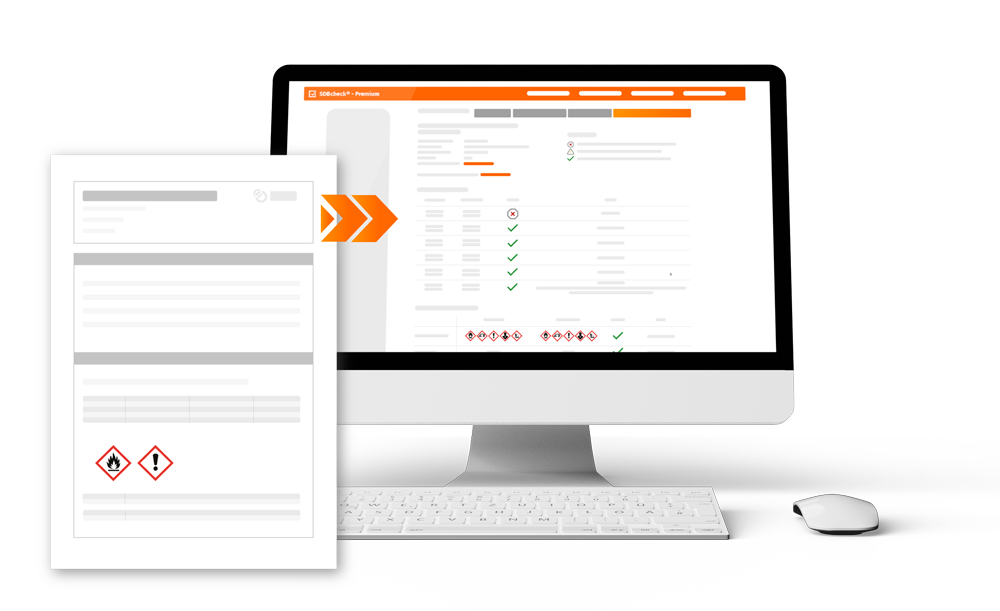Hazardous substance management plays a crucial role in the safety and protection of employees in companies where hazardous substances are handled. The legal basis can be found in the Hazardous Substances Ordinance (GefStoffV). [1] An important component of hazardous substance management is the hazardous substance register. In this article, we will take a closer look at how the hazardous substance register fits into the hazardous substance management workflow and what functions it fulfills.
Recording and documentation of hazardous substances
The hazardous substances register is used to record and document all hazardous substances used or stored in the company. Information such as designation, hazardous properties (e.g. classification, physical and chemical properties), place of use, storage location and safety measures are recorded. This detailed information enables the company to maintain an overview of the hazardous substances present and to take appropriate measures to protect employees.
Where is the list of hazardous substances in the work process?
The list of hazardous substances is usually created as part of the hazardous substance risk assessment. The risk assessment is a fundamental tool of occupational health and safety in which the potential hazards and risks posed by hazardous substances are evaluated. In this process, all activities that use or release hazardous substances are identified and the associated risks are analyzed. During the hazardous substance risk assessment, information is collected on the hazardous substances used or stored. The properties of the substances, their possible effects on the health and safety of employees and the associated protective measures are evaluated. The result of this assessment then flows into the creation of the hazardous substances register. The hazardous substance register is therefore usually created following the hazardous substance risk assessment, as it is based on the findings and results of this assessment. It serves as documentation of the hazardous substances identified and contains detailed information such as designation, hazard class, place of use, storage location and necessary protective measures. If the risk assessment leads to the conclusion that the risk is low, no further measures are required. The operating instructions are in turn drawn up on the basis of the hazardous substances list in order to communicate the necessary safety measures and instructions to employees.
Conclusion
The hazardous substance register plays a central role in hazardous substance management. It enables the recording, documentation and management of hazardous substances in the company and supports risk assessment and warehousing. It also serves as an important source of information for employees. By effectively integrating the hazardous substance register into the hazardous substance management workflow, companies can improve safety in the workplace, reduce the risk of accidents and damage to health and comply with legal requirements. A well-maintained and up-to-date hazardous substance register is therefore of great importance for effective hazardous substance management.
[1] Ordinance on Protection against Hazardous Substances (GefStoffV), status 07/2021











